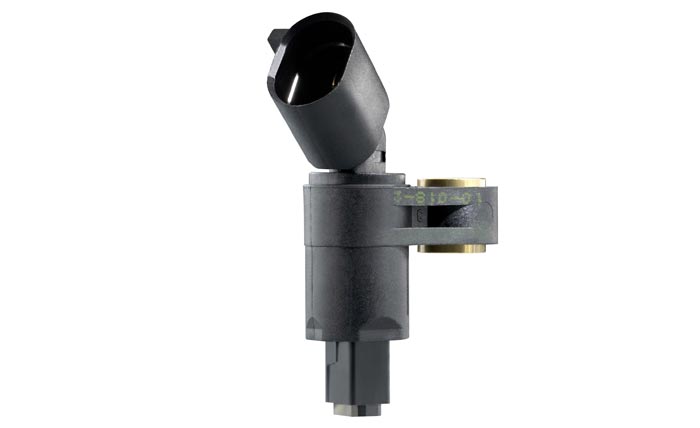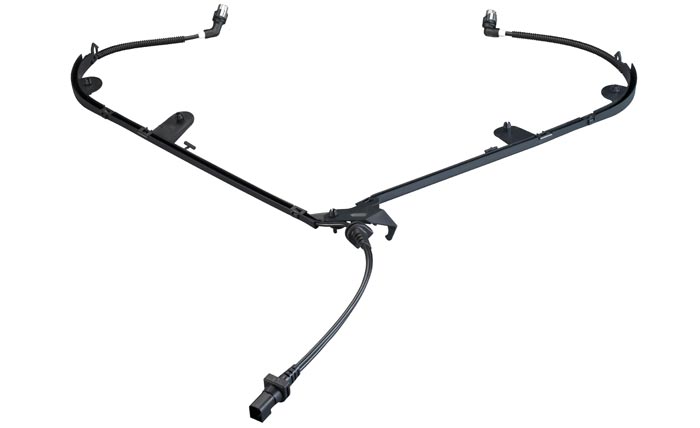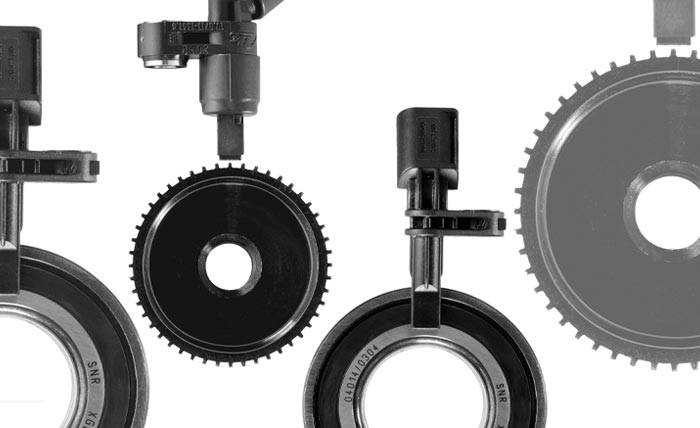Wheel sensors
The wheel sensor has the task of recording the speed of the wheels and communicating this information to the driving safety systems in the form of an electrical signal. All modern vehicles are...
Function
Today, the anti-lock brake system (ABS) is a standard feature of all new vehicles in Europe. ESP® is not far behind. To function reliably, electronic driving safety systems need information about
- the speed of the wheels,
- the dynamic behaviour of the vehicle and
- the forces that are acting on the car.
 Wheel speed sensors (also known as wheel sensors) must detect the speed of the wheels and supply this information to the ABS or ESP control unit in the form of an electrical signal. The latest wheel sensors are also able to detect the direction of rotation of the wheels.
The ABS control unit uses this data to detect individual wheels locking during emergency braking and take countervailing measures to stabilise the vehicle. The EPS does the same thing as soon as it detects a critical situation on the basis of the wheel speed data and other sensor information.
Wheel speed sensors (also known as wheel sensors) must detect the speed of the wheels and supply this information to the ABS or ESP control unit in the form of an electrical signal. The latest wheel sensors are also able to detect the direction of rotation of the wheels.
The ABS control unit uses this data to detect individual wheels locking during emergency braking and take countervailing measures to stabilise the vehicle. The EPS does the same thing as soon as it detects a critical situation on the basis of the wheel speed data and other sensor information.
Passive wheel sensors
The very first ABS systems featured the use of what are known as passive wheel sensors. Working on the basis of the principle of induction, they supply an analogue signal in the form of an alternating voltage to the electronic control unit. The passive sensor is characterised by the fact that it picks up its signal from a sensor toothed wheel which is usually pressed onto the brake disc or drum, the axle or the wheel hub. Passive wheel sensors are able to supply useful signals at and above approx. 7 km/h.
Active wheel sensors
 Due to the expansion of the ABS with the addition of sensors such as ESP® or anti-slip control (ASC), sensor systems that are able to emit a useful signal at very low speeds (virtually as low as standstill) are now the order of the day.
Active sensors are able to meet this requirement:
Due to the expansion of the ABS with the addition of sensors such as ESP® or anti-slip control (ASC), sensor systems that are able to emit a useful signal at very low speeds (virtually as low as standstill) are now the order of the day.
Active sensors are able to meet this requirement:
- They work in accordance with the magneto-resistive principle,
- are supplied with voltage and
- pick up their signal from what is known as an encoder wheel (magnetic pulse sensor).
Safety
The combination of vehicle stability systems, engine management and transmission control are making a direct contribution to increased
- safety on the road,
- much better driving dynamics,
- improved ride comfort,
- lower fuel consumption and
- reduced emission values.















